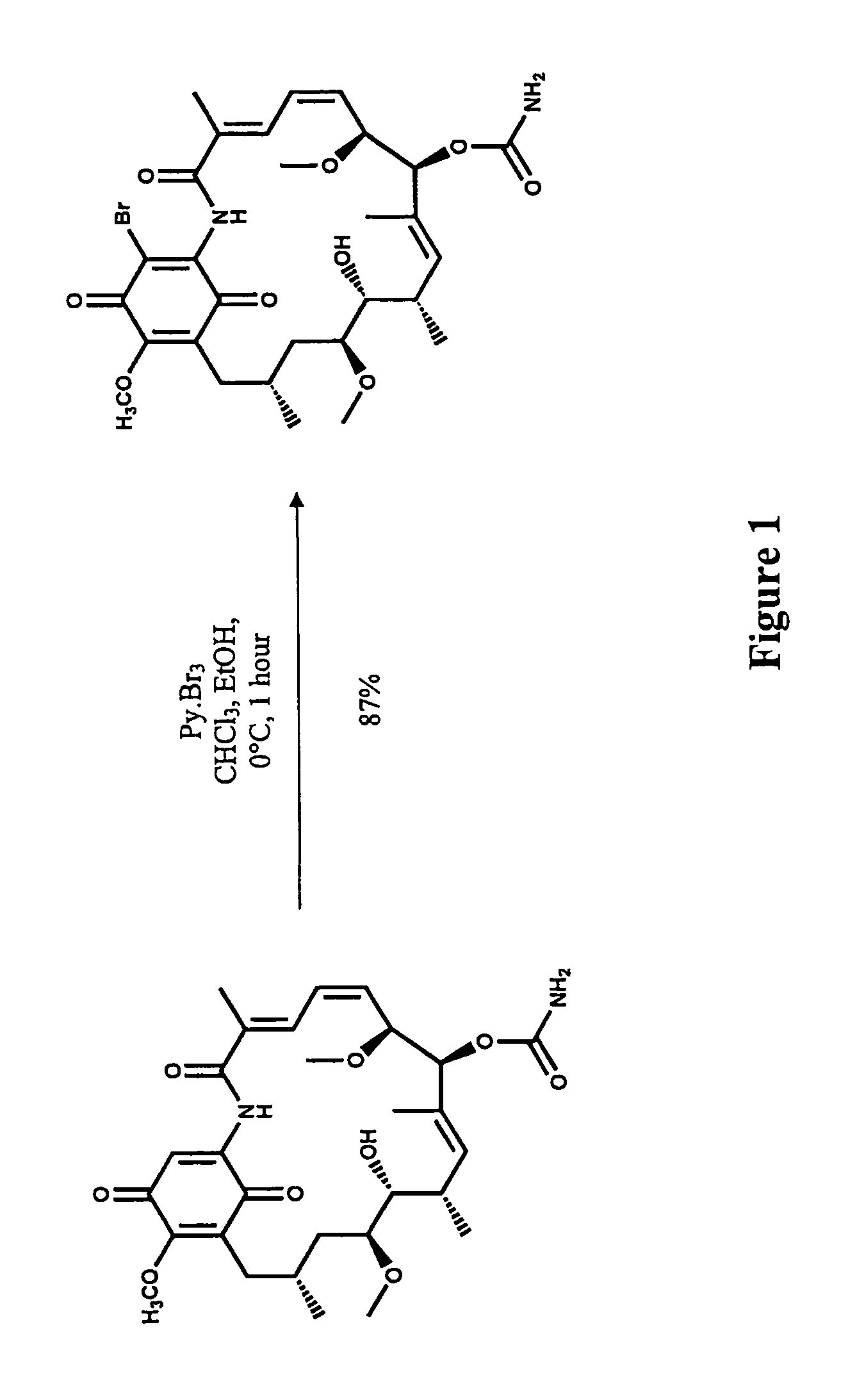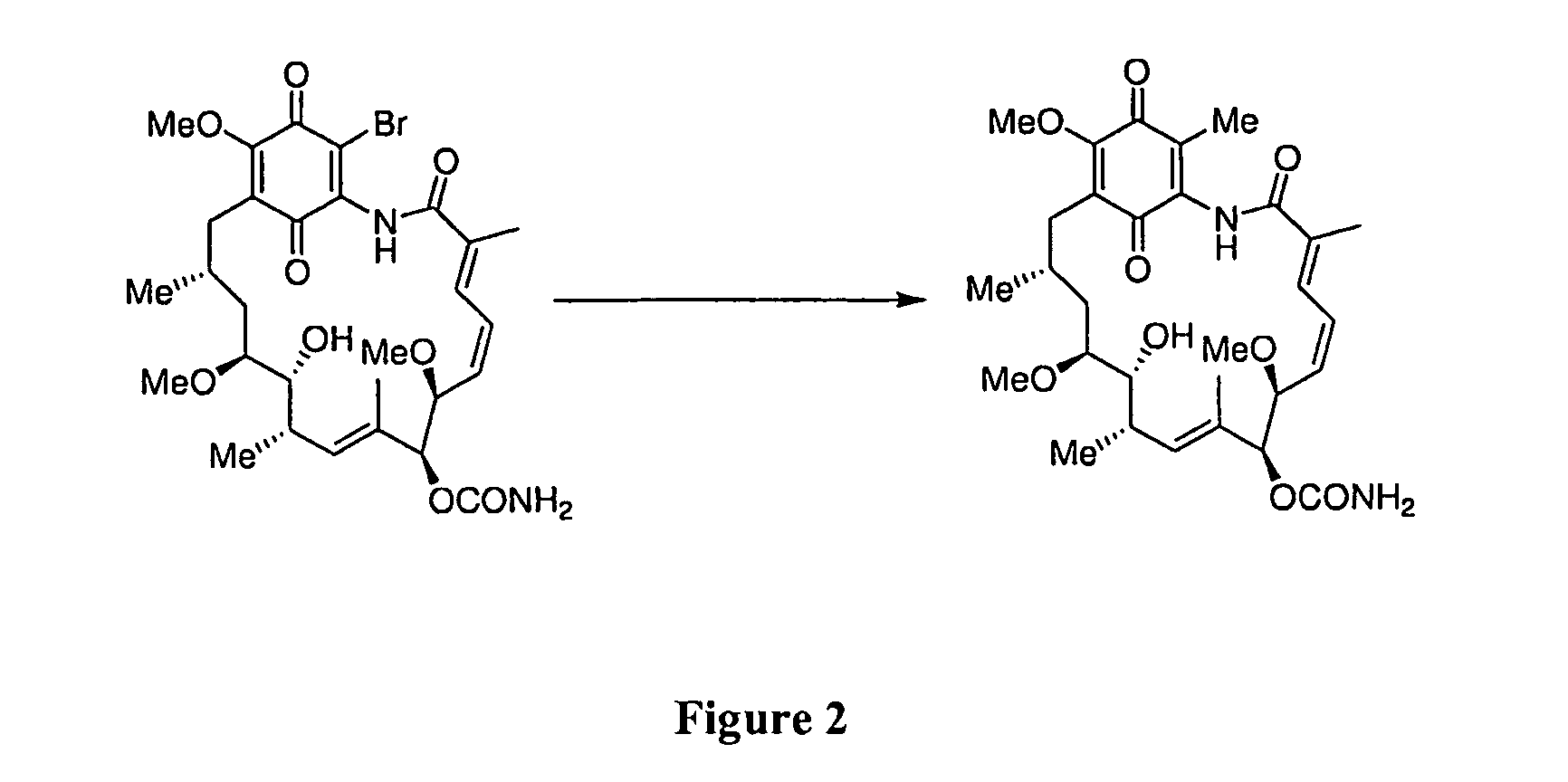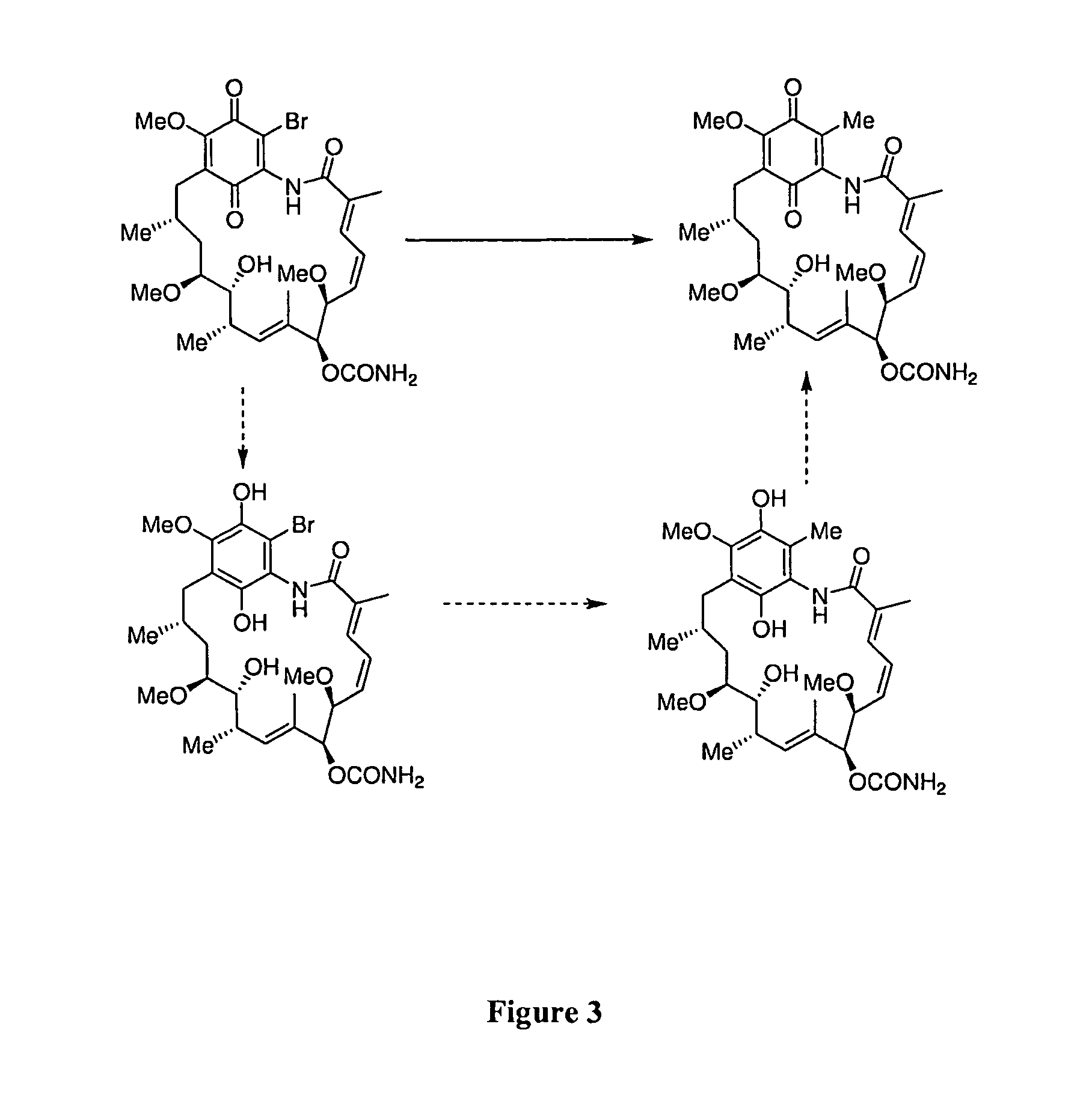Hsp90 inhibitors with modified toxicity
a technology of hsp90 inhibitors and toxicity, applied in the direction of heterocyclic compound active ingredients, drug compositions, biocides, etc., can solve the problems of toxicity of these compounds, withdrawal from phase i clinical trials, glutathione depletion, etc., and achieve the effect of less hepatotoxic and improved toxicity profiles
- Summary
- Abstract
- Description
- Claims
- Application Information
AI Technical Summary
Benefits of technology
Problems solved by technology
Method used
Image
Examples
example 1
Formation of a 19-Substituted Geldanamycin
[0091]19-Bromo geldanamycin analogues were readily synthesized from commercially available geldanamycin by electrophilic bromination with pyridium perbromide as shown in FIG. 1.
example 2
Formation of a 19-Substituted Geldanamycin
[0092]Two synthetic approaches can be utilized for the synthesis of 19-methyl substituted geldanamycin derivatives: a conjugate addition-elimination strategy, and a palladium mediated sp2-sp3 cross coupling strategy. Referring to FIGS. 2 and 3, both approaches start with the readily available 19-BrGA.
[0093]The addition-elimination procedure requires an organometallic species that will selectively attack at the C-19 site in preference to the C-1, C-3, C-5, C-16, C-17, C-18, C-20, C-21 or the carbamic acid residue. The reagents MeMgBr, MeLi in the presence of CuCl, and Fe(acac)3 in the presence of MeMgBr, can be utilized in tetrahydrofuran (THF) solvent at 0° C.
[0094]The sp2-sp3 cross coupling strategy utilizes the Pd(Ph3)4 reagent in the presence of either CuCl and Me4Sn, or in the presence of trimethylboroxine and K2CO3, in 1,4-dioxane solvent at 100° C. This approach has the added advantage that the quinone could also be reduced to the dihy...
example 3
Toxicity of Benzoquinone Ansamycins
[0095]Benzoquinone ansamycins (BAs) can be metabolized by one-electron reductases that interact with glutathione, and these reactions have been associated with hepatotoxicity. Using a series of BAs, the ability of BAs to be metabolized by one-electron reductases, and their conjugation with glutathione, was investigated. The BAs used were: geldanamycin (GM), 17-(allylamino)-17-demethoxygeldanamycin (17AAG), 17-demthoxy-17-[[2-(dimethylamino)ethyl]amino]-geldanamycin (17DMAG), 17-(amino)-17-demethoxygeldanamycin (17AG), and 17-demethoxy-17-[[2-(pyrrolidin-1-yl)ethyl]amino]-geldanamycin.
Analysis of NADPH-Cytochrome P450 Reductase-Mediated One-Electron Redox Cycling of BAs.
[0096]Using human and mouse liver microsomes and either NADPH or NADH as cofactors, the relative one-electron redox cycling rates of BAs mediated by NADPH-cytochrome P450 reductase were determined by measuring the rates of oxygen consumption. The rates of oxygen consumption and NAD(P...
PUM
| Property | Measurement | Unit |
|---|---|---|
| pH | aaaaa | aaaaa |
| body weight | aaaaa | aaaaa |
| chemical structure | aaaaa | aaaaa |
Abstract
Description
Claims
Application Information
 Login to View More
Login to View More - R&D
- Intellectual Property
- Life Sciences
- Materials
- Tech Scout
- Unparalleled Data Quality
- Higher Quality Content
- 60% Fewer Hallucinations
Browse by: Latest US Patents, China's latest patents, Technical Efficacy Thesaurus, Application Domain, Technology Topic, Popular Technical Reports.
© 2025 PatSnap. All rights reserved.Legal|Privacy policy|Modern Slavery Act Transparency Statement|Sitemap|About US| Contact US: help@patsnap.com



